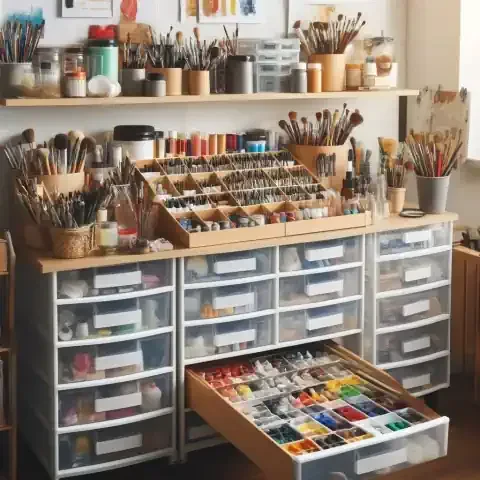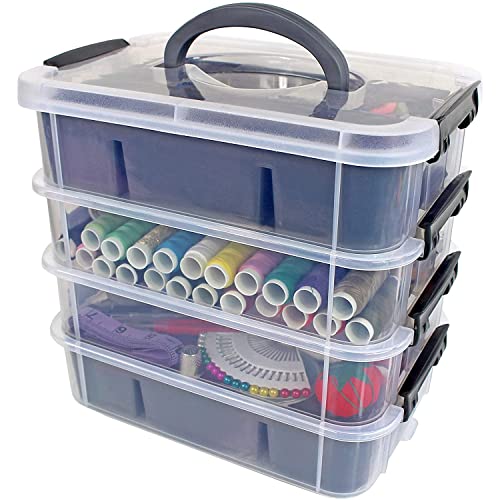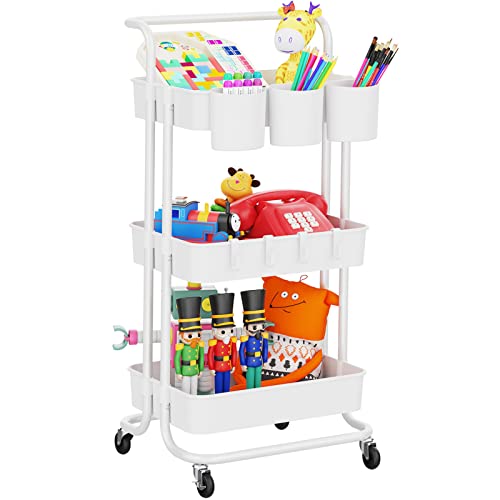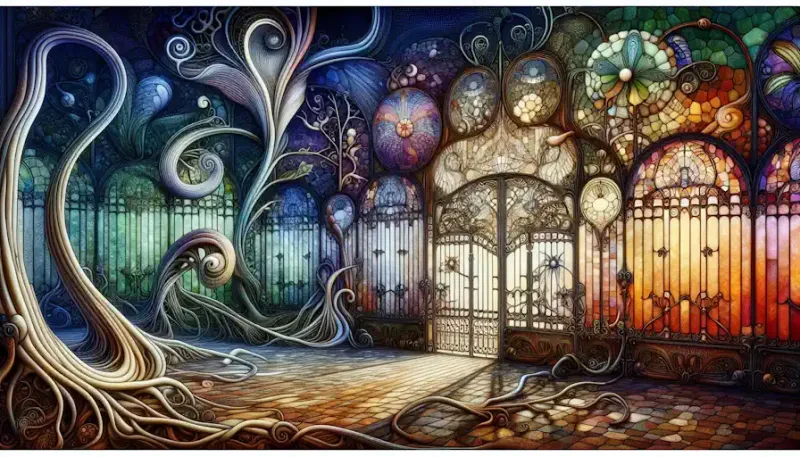Introduction
Artists and creatives often find solace, inspiration, and expression through their craft, surrounded by a plethora of art supplies. Yet, amidst the chaos of brushes, paints, papers, and tools, maintaining a sense of order can be challenging. This is where the importance of organized art supply storage becomes apparent.
The Importance of Organized Art Supply Storage
An organized art supply storage system isn't merely about tidiness; it's about fostering creativity, productivity, and efficiency. When your supplies are neatly arranged and easily accessible, you spend less time searching for materials and more time bringing your artistic visions to life. Moreover, a well-organized space can alleviate stress and mental clutter, allowing you to focus more deeply on your creative endeavors.
Overview of the Benefits of a Well-Organized System
Increased Productivity: With everything in its place, you can quickly locate the tools and materials you need, minimizing disruptions to your workflow.
Enhanced Creativity: A clutter-free environment promotes mental clarity and creativity, enabling you to explore ideas and experiment freely without distraction.
Efficient Use of Space: By optimizing your storage solutions, you can make the most of your available space, whether it's a dedicated studio or a small corner of your home.
Preservation of Supplies: Proper storage helps protect your art supplies from damage, deterioration, or loss, ensuring they remain in optimal condition for longer.
Streamlined Workflow: Organizing your supplies according to function or frequency of use can streamline your creative process, making it easier to transition between tasks and projects.
Brief Overview of What the Article Will Cover
In this comprehensive guide, we'll delve into the art of keeping your creative space organized. From assessing your needs and decluttering your supplies to choosing the right storage solutions and maximizing space efficiency, we'll provide practical tips and strategies to help you ace your art supply storage. Whether you're a seasoned artist or a hobbyist, implementing these techniques will not only transform your workspace but also elevate your artistic practice. So, let's dive in and unlock the secrets to a well-organized and inspiring creative haven.
Assessing Your Needs
Before diving into the task of organizing your art supplies, it's crucial to take stock of your unique requirements and limitations. This initial assessment will provide valuable insights into how best to optimize your storage space and workflow. Here's how to get started:
Understanding Your Creative Space
Begin by evaluating the physical space where you create. Whether it's a dedicated studio, a spare room, or a corner of your living space, consider its layout, size, and any architectural features that may impact storage options. Understanding the nuances of your creative space will help you tailor your organization strategy to fit seamlessly within its confines.
Evaluating Your Current Storage Solutions
Take a critical look at your existing storage solutions, if any. Assess their effectiveness in keeping your supplies organized, accessible, and protected. Note any areas of improvement or inefficiencies that hinder your workflow. This evaluation will serve as a springboard for identifying what's working well and what needs to be revamped.
Identifying Your Most Used Supplies
Next, identify the art supplies that you frequently reach for during your creative process. These may include brushes, paints, pencils, papers, and tools essential to your preferred medium or technique. Understanding which supplies are essential to your practice will inform decisions about their storage and accessibility within your workspace.
Determining Space Constraints and Budget Considerations
Consider any limitations posed by the size and layout of your creative space, as well as your budget for organizing supplies. Are you working with limited square footage or an abundance of storage options? Are you looking for budget-friendly solutions, or are you willing to invest in high-quality storage systems? By acknowledging these constraints upfront, you can narrow down your options and make informed decisions that align with your needs and resources.
By thoroughly assessing your needs, understanding your creative space, evaluating current storage solutions, identifying your most used supplies, and considering space constraints and budget considerations, you'll lay a solid foundation for creating an organized and efficient art supply storage system tailored to your unique requirements.
Sorting and Decluttering
Once you've assessed your needs and identified your most essential supplies, it's time to tackle the task of sorting through your art materials and decluttering your space. Here are some strategies to help you streamline your collection and create a more organized workspace:
Tips for Sorting Through Supplies
Set Aside Dedicated Time: Schedule a block of time specifically for sorting through your art supplies. This ensures you have ample time to focus on the task without interruptions.
Start Small: Begin with a manageable section of your supplies, such as a single drawer or shelf. Breaking the task into smaller, more manageable chunks can make it feel less overwhelming.
Use the Three-Box Method: Label three boxes or bins as "Keep," "Donate/Sell," and "Trash." As you sort through each item, place it into the appropriate box based on whether you want to keep, donate/sell, or discard it.
Be Ruthless: When deciding whether to keep or discard an item, ask yourself whether you've used it in the past year and whether it still serves a purpose in your creative practice. Be honest with yourself and resist the urge to hold onto items out of sentimentality.
Consider Future Projects: Set aside items that you may not currently use but could be useful for future projects. However, be mindful not to hoard materials unnecessarily.
Decluttering Strategies for Unused or Excess Items
Consolidate Duplicate Items: If you have multiple versions of the same tool or supply, consider consolidating them into one container to free up space and reduce clutter.
Donate or Sell Unneeded Supplies: Items that are in good condition but no longer serve your creative pursuits can be donated to local schools, community centers, or art organizations. Alternatively, consider selling them online or through a garage sale to recoup some of your investment.
Repurpose or Upcycle Materials: Get creative with repurposing or upcycling materials that no longer fit into your artistic practice. For example, old canvases can be painted over, or scraps of paper can be used for collage projects.
Considering Donation or Recycling Options for Unneeded Supplies
Local Art Organizations: Reach out to local art organizations, schools, or community centers to inquire about their donation policies and whether they accept art supply donations.
Online Platforms: Explore online platforms such as Freecycle, Craigslist, or local Facebook groups to connect with individuals who may be interested in acquiring your unneeded supplies.
Recycling Centers: Check with your local recycling center to determine if they accept certain types of art materials for recycling, such as paper, cardboard, or plastic packaging.
Importance of Regular Maintenance
Establish a Routine: Schedule regular maintenance sessions to revisit your storage system and ensure everything remains organized and clutter-free.
Stay Consistent: Make decluttering and organizing a habit by incorporating it into your regular cleaning routine. Consistent maintenance will prevent clutter from accumulating and help you maintain an organized workspace in the long term.
Adapt as Needed: As your creative practice evolves and your supply needs change, be prepared to adapt your storage system accordingly. Regular maintenance allows you to reassess your setup and make adjustments as needed to accommodate new materials or projects.
By implementing these sorting and decluttering strategies, you can streamline your collection, create a more organized workspace, and ensure that your art supplies remain accessible and inspiring. Regular maintenance will help you maintain a clutter-free environment and sustain your creativity in the long run.
Choosing the Right Storage Solutions
Selecting the appropriate storage solutions for your art supplies is crucial for maintaining an organized and efficient workspace. With a myriad of options available, it's essential to consider factors such as size, material, accessibility, and sustainability. Here's how to navigate the process of choosing the right storage solutions:
Exploring Various Types of Storage Containers and Systems
Bins and Boxes: Plastic bins, storage boxes, and crates are versatile options for storing a wide range of art supplies. They come in various sizes and can be stacked or nested to maximize space.
Drawers and Cabinets: Drawers and cabinets provide enclosed storage and are ideal for keeping smaller items organized and out of sight. Consider transparent or labeled drawers for easy identification of contents.
Shelving Units: Shelving units offer open storage for larger items such as canvases, sketchbooks, and portfolios. Adjustable shelves allow for customization to accommodate different-sized supplies.
Pegboards and Wall Organizers: Pegboards are excellent for organizing tools and materials that you use frequently. Add hooks, baskets, and shelves to customize your storage setup and keep items within reach.
Portable Caddies and Totes: Caddies and totes are convenient for transporting supplies between your workspace and other locations. Look for options with compartments or dividers to keep items organized while on the go.
Factors to Consider When Selecting Storage Solutions
Size: Choose storage containers and systems that fit the dimensions of your workspace and the quantity of supplies you need to store. Consider both the overall size of the storage solution and the size of individual compartments or compartments.
Material: Select storage solutions made from durable and easy-to-clean materials such as plastic, wood, or metal. Consider the specific needs of your art supplies—for example, archival-quality storage for delicate materials like paper or fabric.
Accessibility: Opt for storage solutions that allow easy access to your supplies while minimizing clutter. Look for features such as clear containers, pull-out drawers, or adjustable shelves that facilitate visibility and reachability.
Customization: Customize your storage solutions to fit your specific needs and preferences. Modular systems, stackable bins, and adjustable shelving units offer flexibility to adapt to changes in your supply inventory and workspace layout.
Sustainable and Eco-Friendly Storage Options
Recycled Materials: Look for storage solutions made from recycled or sustainable materials to minimize environmental impact. Choose products with eco-friendly certifications or labels indicating responsible manufacturing practices.
Multipurpose Containers: Repurpose household items or containers for storage, such as mason jars, shoeboxes, or tin cans. Get creative with upcycled materials to give new life to old items while reducing waste.
Biodegradable Options: Explore biodegradable or compostable storage solutions made from natural materials like bamboo, cork, or recycled cardboard. These options offer eco-friendly alternatives to traditional plastic storage containers.
By carefully considering your storage needs and preferences, exploring various types of storage containers and systems, customizing solutions to fit your space, and prioritizing sustainability, you can create an organized and eco-friendly storage system for your art supplies. This thoughtful approach will not only enhance the functionality of your workspace but also contribute to a more sustainable creative practice.
Organizing Your Supplies
Once you've chosen the right storage solutions for your art supplies, the next step is to organize them effectively within your workspace. Here's how to streamline your storage system for maximum efficiency and creativity:
Categorizing Your Supplies Effectively
Group Similar Items Together: Sort your art supplies into categories based on their type, function, or frequency of use. Common categories may include paints, brushes, drawing tools, paper, and miscellaneous accessories.
Consider Workflow: Arrange your supplies in a way that reflects your creative process. Place frequently used items within easy reach, while less frequently used items can be stored in less accessible areas.
Use Containers or Dividers: Utilize bins, trays, or dividers within your storage containers to keep related items organized and prevent them from mingling. This makes it easier to locate specific supplies when needed.
Utilizing Labels and Clear Containers for Easy Identification
Label Everything: Label each storage container or compartment with clear, descriptive labels indicating its contents. Use labels that are easy to read and understand at a glance, making it effortless to locate supplies during your creative process.
Opt for Clear Containers: Choose transparent containers whenever possible to allow visibility of the contents without having to open them. Clear containers make it easy to quickly assess inventory levels and find what you need without rummaging through multiple containers.
Creating Zones for Different Types of Supplies
Designate Functional Zones: Divide your workspace into zones based on the type of supplies or tasks they accommodate. For example, create separate zones for painting, drawing, crafting, and storage.
Arrange by Frequency of Use: Place frequently used supplies in easily accessible zones near your primary workspace, while less frequently used supplies can be stored in designated areas further away.
Incorporating Creative and Aesthetic Elements into Your Storage System
Personalize Your Space: Infuse your storage system with elements that reflect your personality and creative style. Add decorative touches such as artwork, plants, or decorative storage containers to enhance the visual appeal of your workspace.
Make It Inspirational: Surround yourself with items that inspire and motivate you. Display finished artwork, inspirational quotes, or objects that evoke creativity to create a visually stimulating environment.
Consider Accessibility: Ensure that your storage system not only looks aesthetically pleasing but also functions efficiently. Prioritize accessibility and ease of use to enhance your workflow and productivity.
By categorizing your supplies effectively, utilizing labels and clear containers, creating zones for different types of supplies, and incorporating creative and aesthetic elements into your storage system, you can transform your workspace into a well-organized and inspiring environment conducive to creativity and productivity.
Maximizing Space Efficiency
Efficient use of space is essential, especially in smaller work areas. By utilizing smart storage solutions and strategic placement, you can optimize your workspace for maximum efficiency. Here's how to make the most of your available space:
Utilizing Vertical Space with Shelving and Wall Organizers
Install Wall-Mounted Shelves: Mount shelves above your workspace to take advantage of vertical space for storing supplies, books, and decorative items. Adjustable shelving units allow you to customize the height and arrangement of shelves to suit your needs.
Hang Wall Organizers: Install wall-mounted organizers such as pegboards, grids, or baskets to keep frequently used tools within easy reach. These organizers free up valuable surface space while keeping your supplies organized and accessible.
Making Use of Underutilized Spaces (e.g., Doors, Corners)
Over-the-Door Storage: Hang over-the-door organizers or racks on the back of doors to store small items like brushes, paints, or sketchbooks. This utilizes otherwise unused space and keeps supplies easily accessible.
Corner Shelving Units: Install corner shelving units to make use of awkward or underutilized corners in your workspace. These units provide additional storage without taking up valuable floor space and can accommodate a variety of supplies and equipment.
Investing in Multi-Functional Furniture for Storage and Workspace
Convertible Desks: Choose desks or worktables with built-in storage features such as drawers, shelves, or compartments. Opt for adjustable or foldable designs that can be easily reconfigured to maximize space when not in use.
Storage Ottomans or Benches: Invest in furniture pieces that double as storage solutions, such as ottomans or benches with hidden compartments. These versatile pieces provide seating while offering additional storage space for art supplies or equipment.
Tips for Small Spaces and Studio Apartments
Use Foldable Furniture: Select foldable or collapsible furniture that can be easily stowed away when not in use, such as folding tables, chairs, or easels. This allows you to reclaim floor space for other activities or storage needs.
Vertical Storage Solutions: Emphasize vertical storage solutions like tall bookcases, wall-mounted shelves, and hanging organizers to maximize floor space in small areas. Utilize every inch of wall space to keep supplies organized and accessible.
Mobile Storage Carts: Invest in mobile storage carts or trolleys with wheels that can be moved around as needed. These versatile carts provide additional storage space for art supplies and can be tucked away when not in use.
Utilize Multi-Purpose Rooms: If space is limited, consider using multi-purpose rooms for both creative and non-creative activities. For example, a living room can double as a studio space during the day and revert to its original function in the evening.
By utilizing vertical space with shelving and wall organizers, making use of underutilized spaces, investing in multi-functional furniture, and implementing tips for small spaces and studio apartments, you can maximize space efficiency in your workspace and create a functional and organized environment conducive to creativity and productivity.
Maintenance and Upkeep
Maintaining an organized and efficient art supply storage system requires ongoing attention and care. By establishing cleaning and organizing routines, regularly assessing and adjusting your system, and staying mindful of storage overload, you can ensure that your workspace remains clutter-free and conducive to creativity.
Establishing Cleaning and Organizing Routines
Set a Schedule: Establish a regular cleaning and organizing schedule that fits into your routine. Whether it's daily, weekly, or monthly, consistency is key to preventing clutter buildup and maintaining order in your workspace.
Divide Tasks: Break down cleaning and organizing tasks into manageable chunks to prevent overwhelm. Focus on one area or category of supplies at a time to maintain focus and efficiency.
Designate Storage Spaces: Clearly define designated storage spaces for each category of supplies to facilitate organization and streamline cleanup efforts. Return items to their designated spots after each use to maintain order and prevent clutter from accumulating.
Regularly Assessing and Adjusting Your System as Needed
Schedule Check-Ins: Set aside time periodically to assess the effectiveness of your storage system and identify areas for improvement. Regular check-ins allow you to address any issues promptly and make adjustments as needed to optimize your workspace.
Evaluate Workflow: Consider how your storage system aligns with your creative process and workflow. Identify any bottlenecks or inefficiencies that may be hindering productivity and make adjustments accordingly.
Staying Mindful of Storage Overload and Avoiding Clutter Build-Up
Practice Minimalism: Adopt a minimalist mindset when it comes to acquiring new supplies. Prioritize quality over quantity and resist the urge to accumulate unnecessary items that may contribute to clutter buildup.
Regular Purging: Periodically review your supply inventory and declutter items that are no longer needed or used. Donate, sell, or discard supplies that no longer serve a purpose in your creative practice to free up space and prevent storage overload.
Incorporating Regular Reviews of Supplies to Ensure Efficiency
Conduct Inventory Reviews: Schedule regular reviews of your supply inventory to assess usage patterns and identify items that need replenishment or replacement. Keep track of supplies that are running low and replenish them as needed to avoid interruptions to your creative process.
Streamline Supplies: Streamline your supply inventory by eliminating duplicates, consolidating similar items, and prioritizing essential materials. Keep only what you need and use regularly to maintain an efficient and organized workspace.
By establishing cleaning and organizing routines, regularly assessing and adjusting your system, staying mindful of storage overload, and incorporating regular reviews of supplies, you can ensure that your art supply storage remains organized, efficient, and conducive to creativity. Consistent maintenance and upkeep will help you maintain a clutter-free environment and sustain your inspiration and productivity over time.
Art Supplies Storage
Organizing your art supply storage isn't just about tidiness—it's about unlocking your full creative potential. By implementing effective storage strategies, you can create a workspace that fosters productivity, creativity, and inspiration. Let's recap the importance of organized art supply storage and encourage you to put the strategies discussed in this article into action.
Recap of the Importance of Organized Art Supply Storage
Organized art supply storage is essential for several reasons:
Increased Productivity: With a well-organized workspace, you spend less time searching for materials and more time creating.
Enhanced Creativity: A clutter-free environment promotes mental clarity and allows you to focus on your artistic vision without distractions.
Efficient Use of Space: By maximizing space efficiency, you can make the most of your available workspace and optimize your creative process.
Preservation of Supplies: Proper storage helps protect your art supplies from damage, ensuring they remain in optimal condition for longer.
Encouragement to Implement Strategies Discussed in the Article
Now that you understand the benefits of organized art supply storage, it's time to take action. Implement the strategies discussed in this article, such as sorting and decluttering, choosing the right storage solutions, and maximizing space efficiency, to transform your workspace into a well-organized and inspiring environment.
Final Thoughts on Maintaining Creativity and Inspiration Through Organization
Maintaining a organized workspace isn't just about keeping things tidy—it's about nurturing your creativity and fostering an environment where inspiration can flourish. By organizing your art supplies thoughtfully and maintaining your workspace regularly, you create a conducive environment for creative exploration and expression.
Invitation for Feedback and Sharing of Personal Tips and Tricks
We hope this article has provided you with valuable insights and practical tips for organizing your art supply storage. We invite you to share your feedback, questions, and personal tips and tricks for maintaining an organized workspace. Together, we can continue to support and inspire each other on our creative journeys.
In conclusion, remember that organization is a journey, not a destination. Embrace the process, stay open to experimentation, and enjoy the creative benefits of a well-organized workspace. Here's to a clutter-free and creatively fulfilling future!







